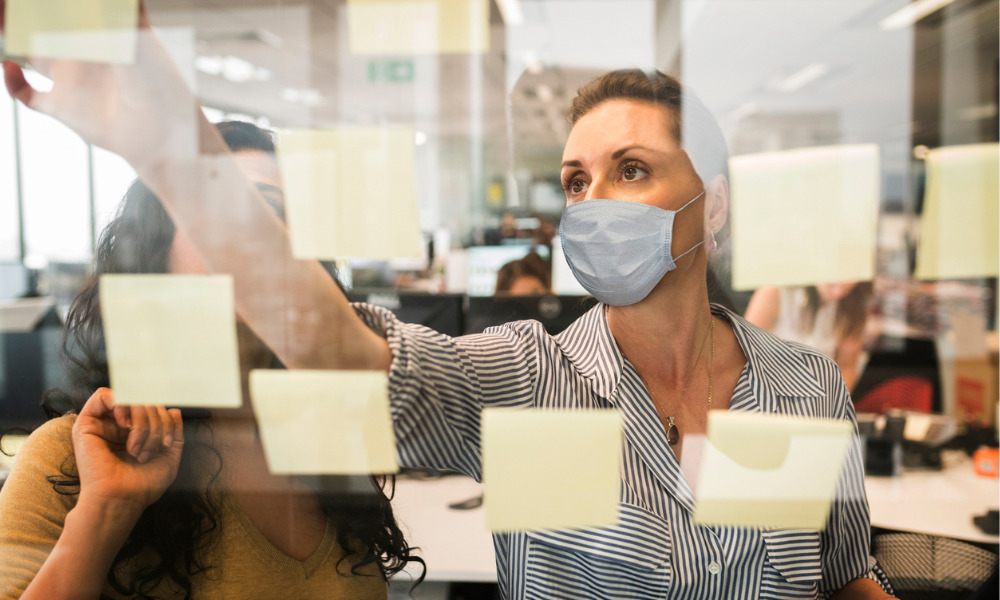
Building resilience begins with the ability to take care of yourself, says one doctor

In a recent speech, Dr Low Kiang Wei, medical director at International SOS said this about wellness: “not everybody who does not have a disease is equally healthy.”
The experienced physician and medical consultant shared how leaders should focus on preventative measures to help employees sustain their physical and mental well-being, and thereby build their resilience.
Dr Low made clear that you must look beyond “traditional” disease prevention and health screenings to sustain wellness.
Also, there are many other aspects that will impact a person’s well-being – both physical and mental – such as nutrition, physical activities, sleeping habits, as well as the use of substances like alcohol, tobacco and other drugs.
“In the last 10 years, we’ve had a lot of data that shows that sleep and fatigue affect your hormonal pathways, your cortisol, your adrenaline pathways, and affects reaction to stress and triggers,” he said during his session at the HR Leaders Asia Virtual Summit.
The doctor has spent many years as a consultant and researching the topic at International SOS, which is in the business of workforce resilience, as well as protecting global workforces from any health and security threats, be it an epidemic or a natural disaster.
“I think the formula of exposing the employees to these topics, giving them the appropriate knowledge, assistance after that, and giving them access to help will be very integral,” he said.
Read more: COVID-19: HR's role in managing the 'next wave' of infections
Step 1: Raise awareness
To ensure a successful program, Dr Low said that raising awareness and ‘exposing’ employees to what well-being looks like is a critical step – this should start well before you implement any initiatives.
Without awareness, he believes that employees will be less motivated to practice what they’ve learned from any wellness workshops or sessions, making your strategy “a lot less effective”.
He suggested that leaders focus on the following to build a successful program:
He emphasised that education and using the right tactics are crucial for programs to be successful. For example, if the focus is on sustaining mental wellness, the corporation can focus on implementing things like mental health checks, having an ‘escalation matrix’, and Mental Health First Aid protocols.
At the individual level, Dr Low said a lot can be done for both mental wellness and resilience. Efforts for both also typically overlap with physical health – like exercise, sleep and good nutrition.
However, it’s important that people are first aware of mental health as an issue to be able to identify symptoms and communicate if and when they needed help.
Read more: Unilever global head: How to manage your HR team’s well-being
Step 2: Build a conducive culture
In terms of best practices, he shared that organisations with a strategy around both physical and mental wellness tend to have the most success.
And the top killer of programs? A toxic culture and leadership.
“If we have a culture that is very toxic, and even if we implement a wellness program following all the steps, we will have very poor measurements and outcomes anyway,” he said. “It will not really work.”
Read more: How to measure the ROI on wellbeing
Step 3: Measure program effectiveness
Once you’ve implemented your strategy and various initiatives, the next step is to monitor its progress. This is important to demonstrate ROI and to ensure that you’re on the right path towards safeguarding employees’ health and well-being.
Dr Low acknowledged that measuring effectiveness of well-being programs might be tricky, so he gave some tips.
“The caveat with measurements for a lot of medical and wellness things is that sometimes the effects may be slow to show, and we don’t want that to indicate that the program is not working,” he said.
“What I suggest is that you break measurements into short term, medium term and long term – and this is taken from a lot of medical studies as well.”
For short term measurements, leaders can look at things like program participation level, feedback from activities, and how well the activities are designed.
In the medium term, you want to “see a little bit more change”. Leaders can consider KPIs like awareness level.
This can be seen in employees’ practices pre- and post-health programs, for example whether there’s change in the amount of exercise done per week, frequency of mindfulness sessions, or whether staff morale and job satisfaction have changed.
Over the long term, leaders should look at more ‘quantifiable matrices’. This could be the rate or incidence of health problems and whether there are any changes in medical costs to the company. Leaders can also observe whether productivity has increased, or turnover has decreased.
“Everything is changing,” he said. “There are so many variables we need to consider that we need to take a step back and look at the whole approach – this is where we need companies to be more agile and more resilient.
“And I think despite all the automation, about how work is changing, we cannot run away from human capital…So, human capital, I would say needs to be even more agile and resilient.”
Click here for more information on building workforce resilience